If you have ever been to the Biennale, you have probably wandered past the pavilions in Giardini without thinking about glass. Yet, in the first half of the 20th century, Murano’s furnaces were closely tied to this international stage. The new exhibition at Le Stanze del Vetro sheds light on this overlooked story, while giving you the chance to admire some of the most remarkable glass creations of the period.

Murano glass at the Biennale
At Le Stanze del Vetro, the current exhibition ‘1932–1942 Murano Glass and the Venice Biennale’ takes you back to a fascinating decade when Venetian glass claimed its own place at the Biennale. In 1932, the organisers opened the Venezia pavilion in Giardini to promote Murano glass and to revive the struggling glass industry. From 1932 to 1970, it showcased masterpieces by Venini, Barovier Seguso, Salviati, and even Carlo Scarpa. For Murano’s glassmakers, this meant international recognition and the chance to stand alongside the contemporary art of their time. Walking through the exhibition at Le Stanze del Vetro, you get a sense of how glass was not just craft but a driving force of innovation in those years.
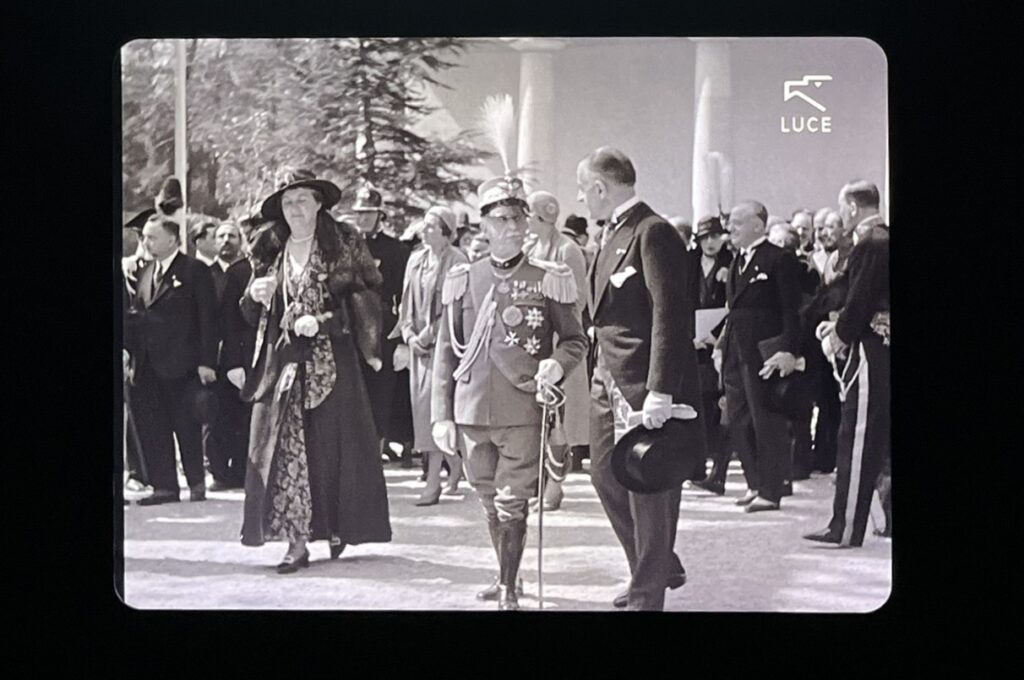
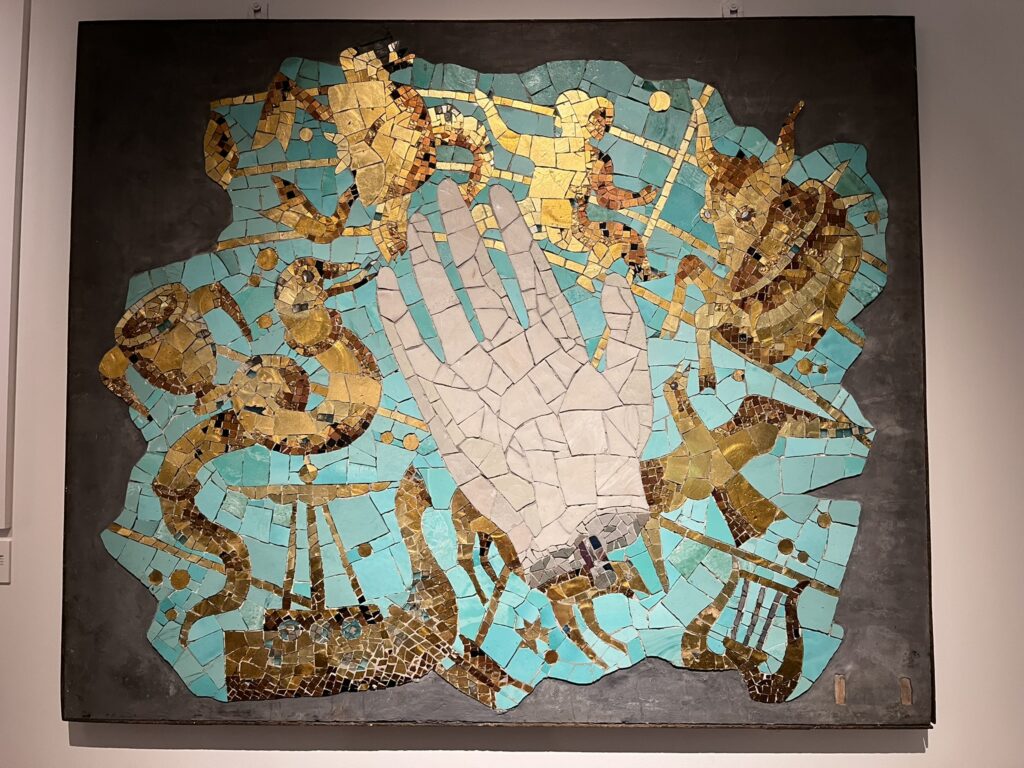
The exhibition starts with some old videos of the Biennale, showing you the glamour of visiting such an event in these times. The following rooms are filled with names that will sound familiar if you already know a bit about Murano. You will come across impressive pieces from Venini, Barovier Seguso & Ferro (later Seguso Vetri d’Arte), Flavio Poli, Dino Martens, and many others who left their mark on this period. Also the Venetian architect Carlo Scarpa worked for Venini during his career. His refined designs still look surprisingly modern. Together, the stunning glass works show how diverse the approaches to glassmaking were, ranging from subtle, architectural forms to bold, colourful experiments.
Make sure to check out my post ‘Carlo Scarpa’s hidden gem: Palazzina Masieri’ if you want to visit another glass exhibition, this one in an architectural setting by Scarpa.
What makes the exhibition engaging is the way it connects the Biennale to Murano. You’ll see how the furnaces such as Venini, AVEM, Salviati, Fratelli Toso used this international stage to present their most daring ideas. Some of the works are iconic, others are lesser known, but all of them reflect the ambition of Murano glassmakers to be seen as artists, not just artisans. It’s a side of the Biennale’s history that isn’t often talked about, yet it shaped how glass was perceived in Venice and abroad.
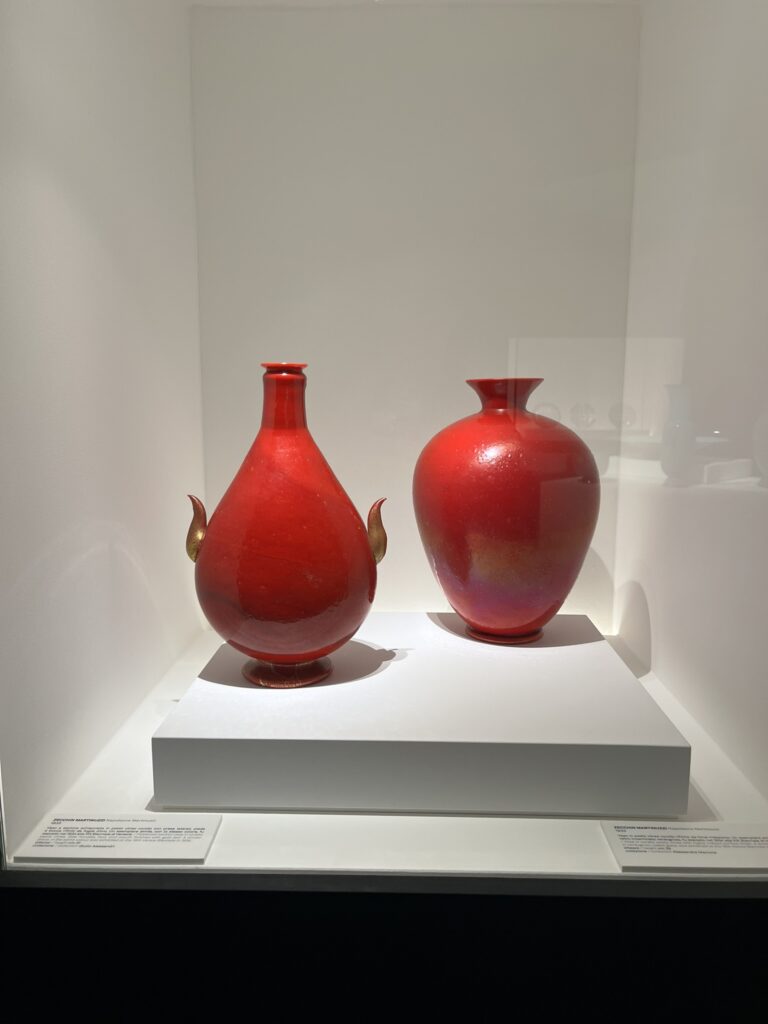
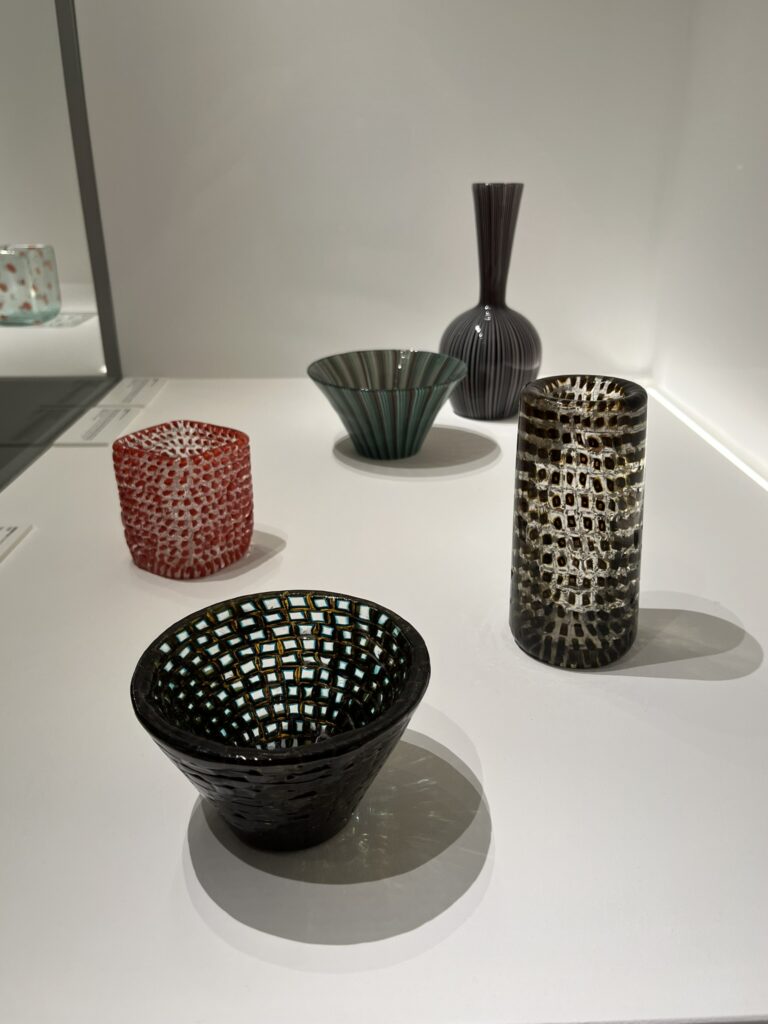
If you have visited Le Stanze del Vetro before, you’ll know how carefully their exhibitions are curated. This one, curated by Marino Barovier, is no exception. The layout is clear, the pieces have been meticulously selected, and the story is easy to follow, even if you’re not a glass expert. For anyone who enjoys exploring Venice beyond the obvious sights, it’s a rewarding stop. You will leave with a new perspective on both Murano glass and the Biennale itself.
The exhibition runs until November 23, 2025, admission is always free, and there are also free guided tours every weekend in both Italian and English. You can find more information on the website of Le Stanze del Vetro.
If you loved the exhibition and don’t want to carry the heavy catalogue back home, or you can’t make it to the exhibition and you want to admire this glass art, you can buy the catalogue ‘1932-1942 Murano Glass and the Venice Biennale’ online.
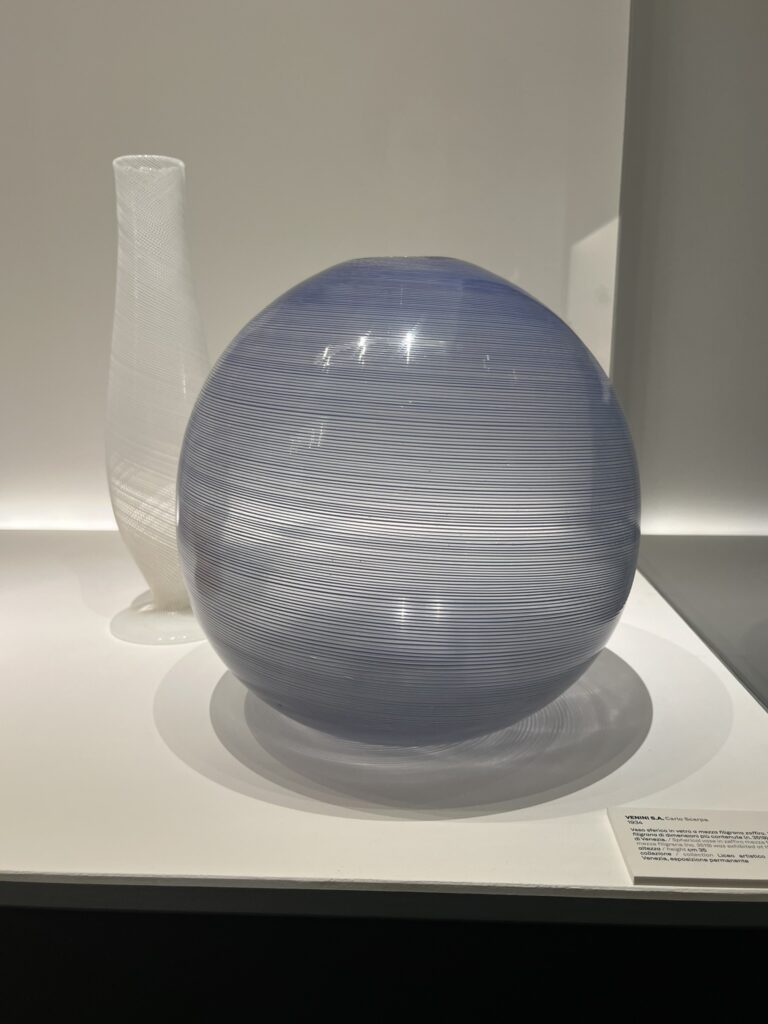
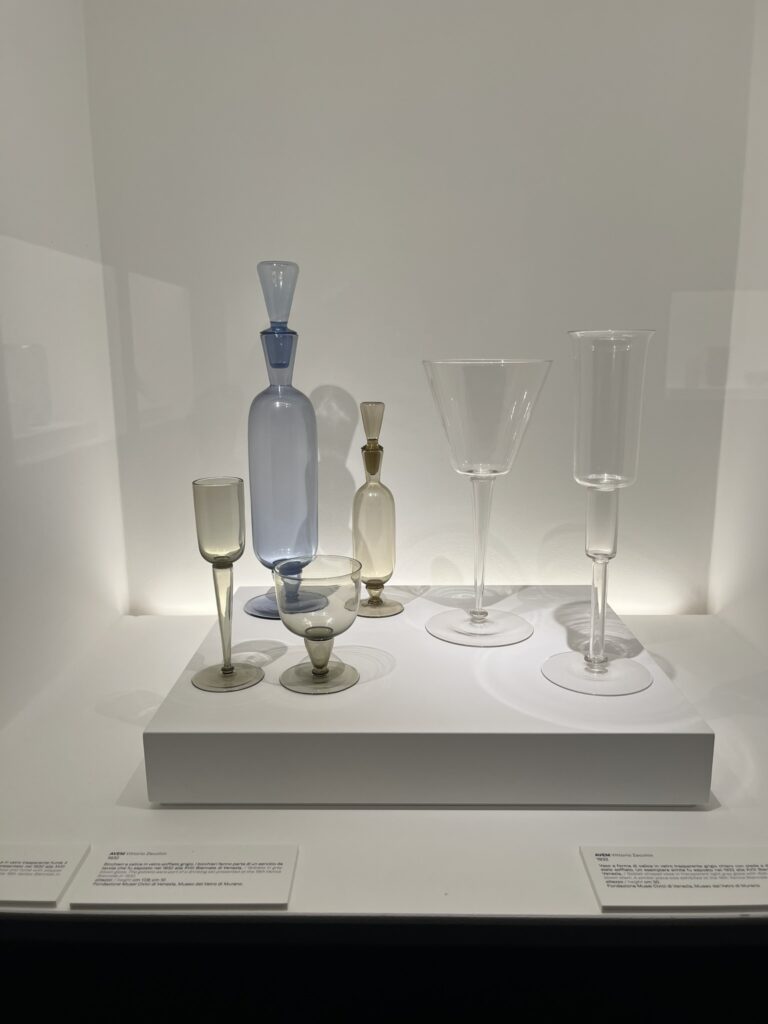
The craft of Murano glass
Glass was not invented in Murano, but the island played an important role in the development of the glassmaking industry. The most ancient glass came from Egypt and dates from the 16th to 14th century BC.
The first evidence of glassmaking in Venice is a document from 846. However, the most relevant date for the glass industry in Murano is 1291. At that moment, the Venetian council obliged all glassmakers to leave Venice. The risk was too high that a fire at one of the furnaces would destroy the whole city with its wooden buildings. Only beads could still be created in Venice. The Murano island was chosen as the perfect location and has since then become famous as the glass island.
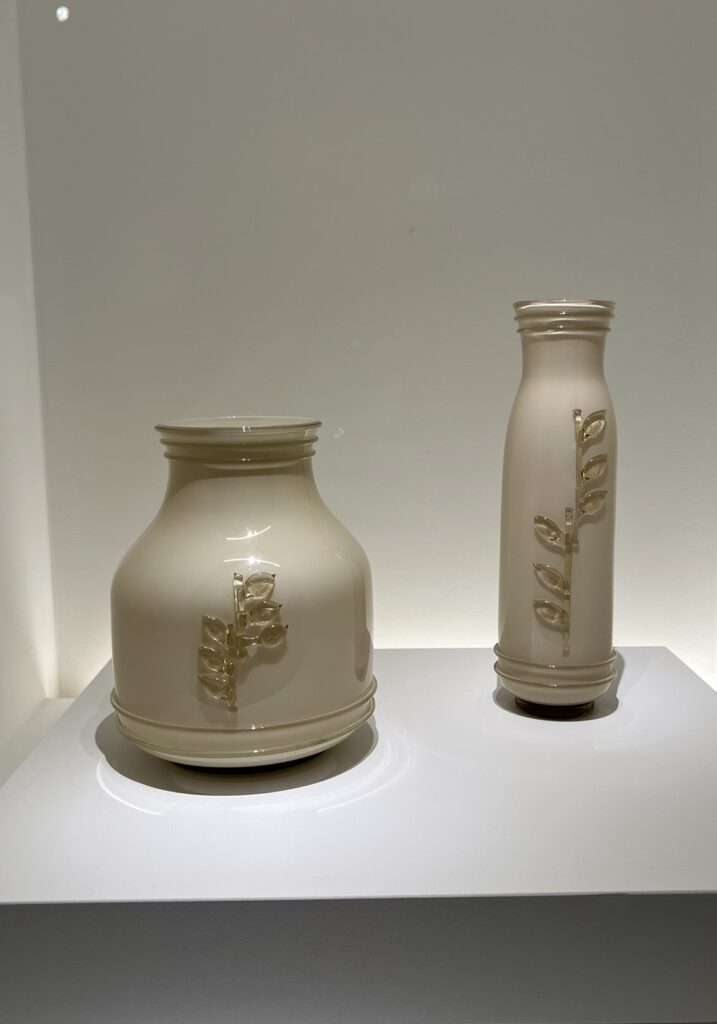
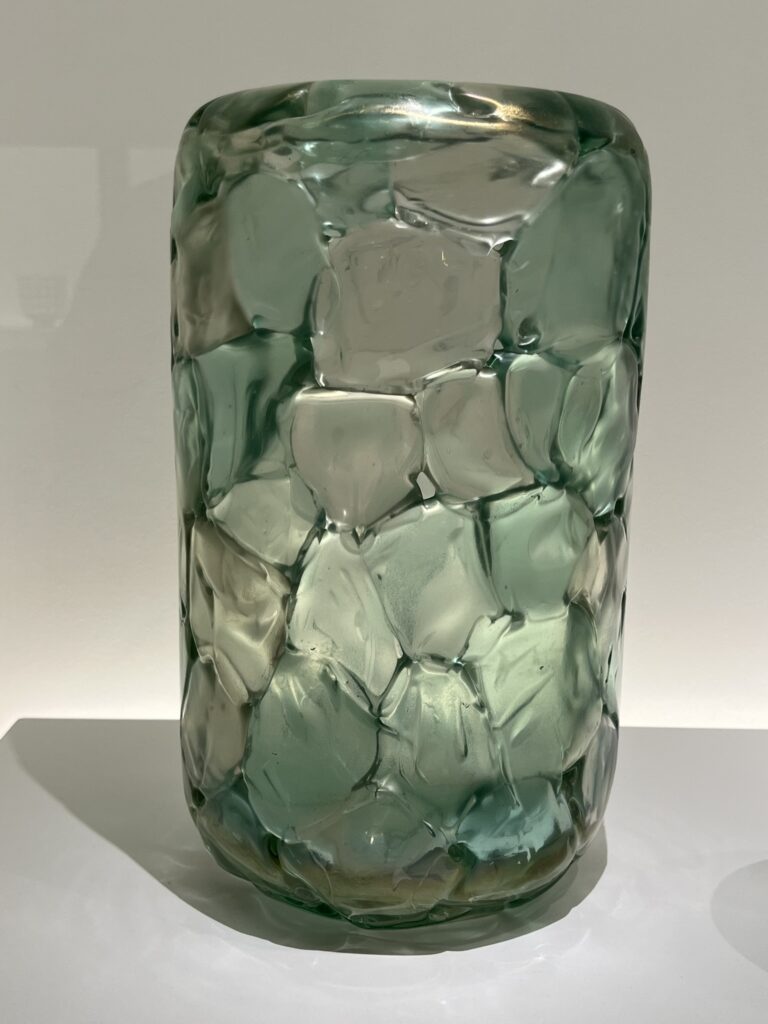
The tradition still remains at the heart of Murano. Glassblowing has always been a collective effort, led by the maestro at the furnace. This honorary title is earned only after decades of dedication, respect, and mastery of every technique. It requires passion, skill, and an ability to make glass come alive. It’s something you’ll immediately sense when standing in front of a true Murano piece.
Murano glass itself is distinctive. It is a soda glass, which makes it lighter and more malleable than other types, and it can be shaped into incredibly thin forms. Over the centuries, the island’s glassmasters have invented techniques that remain classics today. Angelo Barovier’s vetro cristallino of the 15th century was the first truly colourless glass. Other typical Murano techniques include lattimo (opaque white glass), pulegosa (with air bubbles), and filigrana (delicate threads of white glass inside a clear form). These techniques give Murano glass its unique character and explain why it was so popular at European royal courts.
Le Stanze del Vetro
Le Stanze del Vetro on San Giorgio Maggiore is dedicated entirely to the art of glass. Twice a year, it hosts large-scale exhibitions like this one, each focusing on a different theme, period, or artist. Thanks to their thorough research and thoughtful displays, these shows make the world of glass accessible, even if you arrive with little background knowledge.
For frequent visitors to Venice, it’s a place that deserves to be on your regular itinerary. The subject matter changes, but the quality and depth remain the same which makes it one of the city’s most rewarding cultural stops.
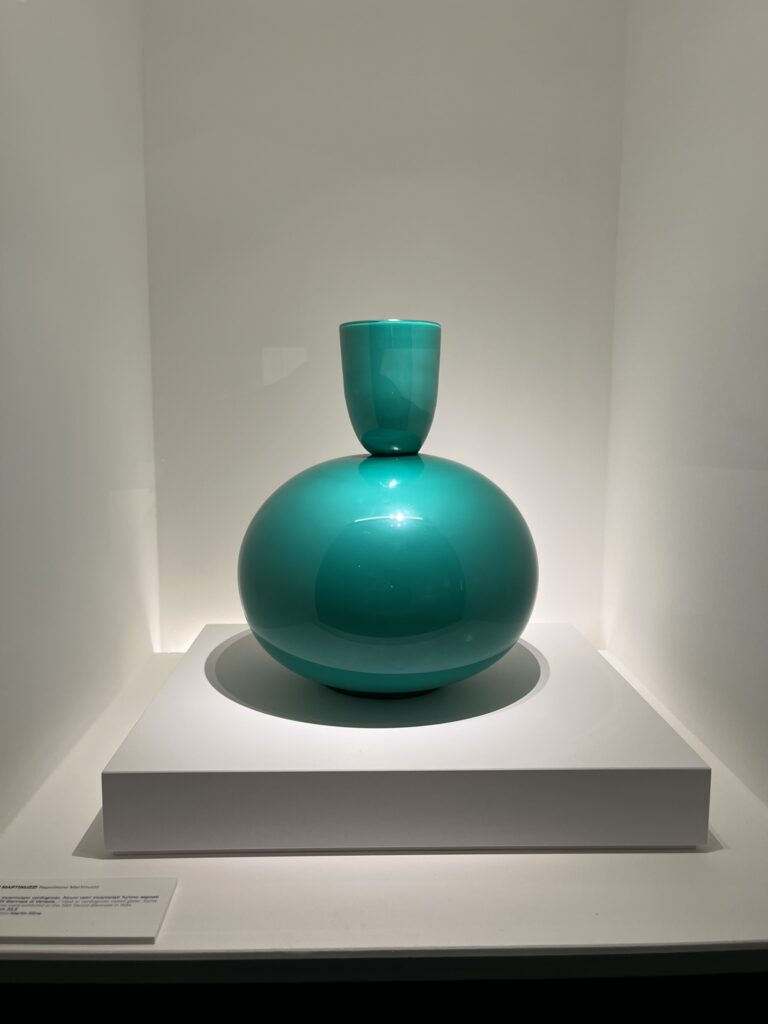
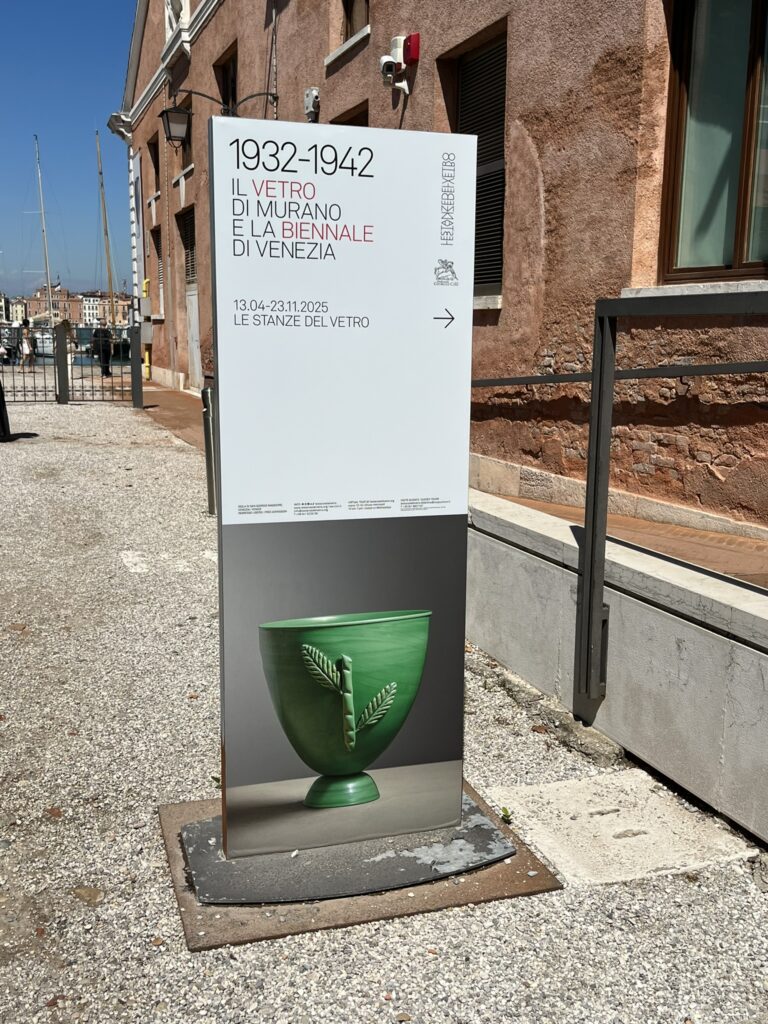
If you’re planning to visit to Venice this year, step off the usual paths and take the vaporetto to San Giorgio. This exhibition offers not only beautiful objects to admire, but also a deeper insight into how Murano glass became part of the Biennale’s story, and by extension, part of Venice’s cultural identity.
If you want to continue exploring San Giorgio Maggiore and Venice after your visit to the exhibition, check out ‘A walk from Sant’Erasmo to San Giorgio Maggiore with Eva’. Follow the walk in the opposite direction and discover what the Venetian photographer Eva shares as her favourite locations in her city.
Enjoy the visit!
